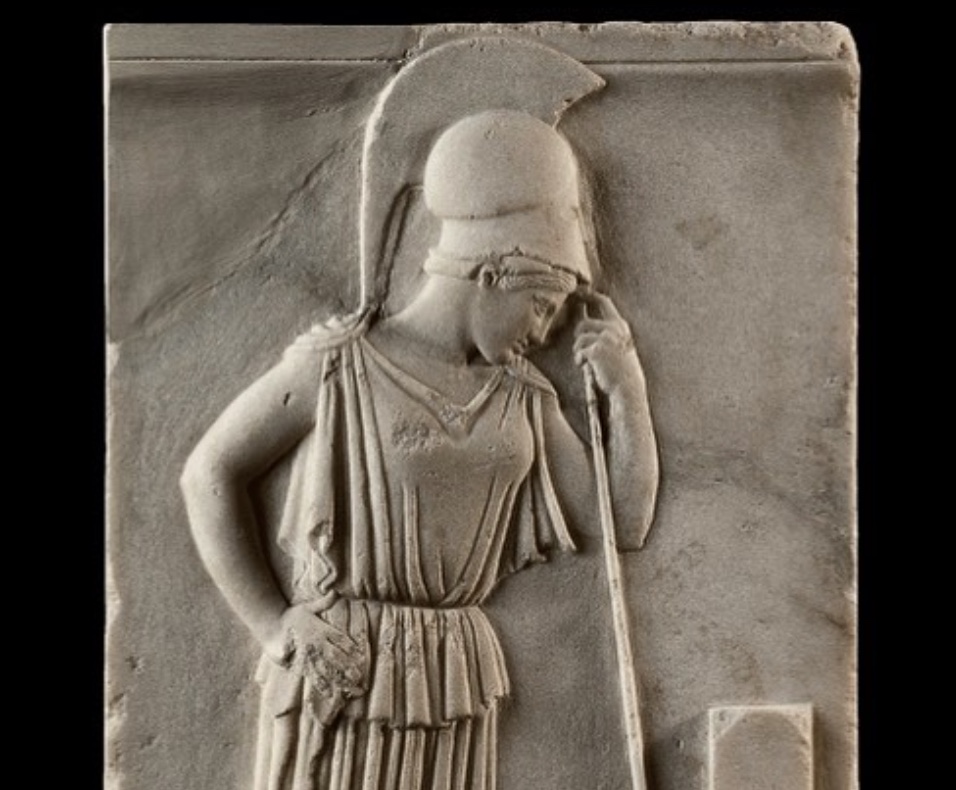Is there any way to overestimate the immense impact of the Persian Wars on Athenian (even panHellenic) consciousness and self-determination?
Shown here in relief (not such a big one, just over 50 cm tall), the city’s patron goddess is helmeted and standing in repose, one hand on her hip, and the other grasping the butt of a spear, upon which she leans heavily. Her head is downturned, expression solemn, and overall aspect somewhat weary. The carving and demeanor epitomizes the so-called ‘Severe-Style’ that developed in the 480’s and decade or so following.

What exactly that rectangular stele she contemplates might be has been debated, with the most reasonable explanation being (also the most evocative, which is why I like it) that it bore the inscribed names of Athens’ battle-dead.
The Achaemenid military moved so inexorably and mightily westward (not shy in their intent) in the late sixth century and into the fifth that it must have made the complete steamrolling of Greece seem inevitable to just about everyone. Instead Athenian victories (outnumbered and outgunned, and with their city ransacked) became the stuff of legend and spurred on a prosperous and confident new era.
But neither the colossal scale of material destruction, nor the human cost, was forgotten. And this mysterious little stele, found in two pieces and somewhat bruised south of the Parthenon (the splashy, all-important monument to new Athenian dominance), might very well be a glimpse into those stunned and bittersweet years after 479 B.C.




